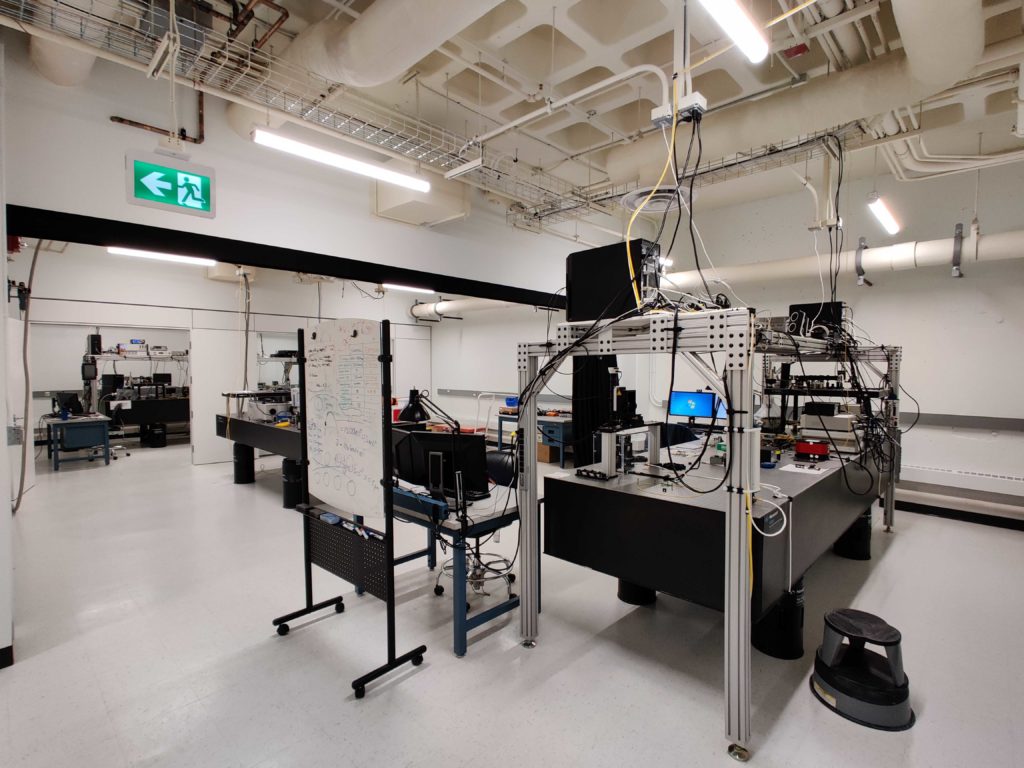Our group conducts experiments at both the University of Calgary and NRC Nano in Edmonton. This dual lab arrangement allows close collaboration with quantum optics research groups in Calgary, and nanotechnology researchers at NRC Nano and the University of Alberta.

University of Calgary (IQST) Lab
First built in 2013 and expanded into a newly renovated space in 2021, this lab houses apparatus for nanophotonic device characterization and cryogenic spectroscopy of single quantum emitters. Key tools include nanopositioning systems for tapered fiber probing of nanophotonic devices, confocal microscopy and spectroscopy systems, and tunable diode lasers. It’s home to state of the art instruments from Montana Systems (Nanoscale Workstation), many swept wavelength tunable lasers, high speed electronics (20 GS/s AWG, real time spectrum analyzers, etc.), single photon detection hardware, etc.
In collaboration with IQST researcher Daniel Oblak, in 2020 we set up another lab equipped with a BlueFors diluton fridge for experiments combining quantum nanophotonics and optomechanics with quantum networking systems.
NRC Nano Lab
NRC Nano is one of the newest major NRC-Canada research center (building completed in 2006), and hosts nanotechnology groups with expertise in microscopy, low temperature physics, nanomechanics, sensing, biophysics, biology, and chemistry. NINT is located on the University of Alberta campus, and is connected to the University of Alberta nanofab, which contains several electron beam lithography tools (RAITH), as well as etching and deposition facilities. NRC Nano also has its own cleanroom facilities, with plasma etching (Oxford Plasmalab 100 ICP-RIE), nanoimprint lithography, and thin film deposition tools (LPCVD). These nanofabrication tools are a key resource for our group.
Our NRC Nano lab is equipped with a fiber taper nanophotonic device probing station, tunable lasers, and electronics necessary for measuring nanomechanical effects in optical devices. We are currently collaborating with UofA researchers Mark Freeman and John Davis on experiments studying interactions between magnetic and optical nanostructures.
Simulation/ Computation Tools
We are heavy users of finite element and finite difference time domain (FDTD) simulation tools for photonic devices, as well as stochastic differential equation solvers for quantum optics systems. These tools can be optimized to take advantage of both parallel computing clusters (for time domain simulations), and muticore machines with large amounts of local memory (for eigenvalue problems involving matrix inversions). We have a small cluster of high performance computing machines, and access to shared computing facilities such as Westgrid.







